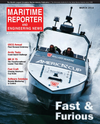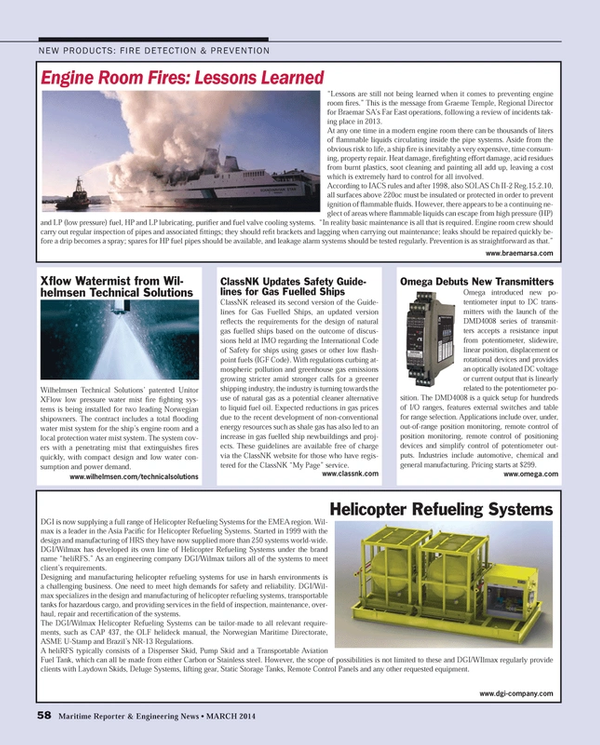
Engine Room Fires: Lessons Learned
“Lessons are still not being learned when it comes to preventing engine room fires.” This is the message from Graeme Temple, Regional Director for Braemar SA’s Far East operations, following a review of incidents taking place in 2013.
At any one time in a modern engine room there can be thousands of liters of flammable liquids circulating inside the pipe systems. Aside from the obvious risk to life, a ship fire is inevitably a very expensive, time consuming, property repair. Heat damage, firefighting effort damage, acid residues from burnt plastics, soot cleaning and painting all add up, leaving a cost which is extremely hard to control for all involved.
According to IACS rules and after 1998, also SOLAS Ch II-2 Reg.15.2.10, all surfaces above 220oc must be insulated or protected in order to prevent ignition of flammable fluids. However, there appears to be a continuing neglect of areas where flammable liquids can escape from high pressure (HP) and LP (low pressure) fuel, HP and LP lubricating, purifier and fuel valve cooling systems. “In reality basic maintenance is all that is required. Engine room crew should carry out regular inspection of pipes and associated fittings; they should refit brackets and lagging when carrying out maintenance; leaks should be repaired quickly before a drip becomes a spray; spares for HP fuel pipes should be available, and leakage alarm systems should be tested regularly. Prevention is as straightforward as that.”
www.braemarsa.com
(As published in the March 2014 edition of Maritime Reporter & Engineering News - www.marinelink.com)
Read Engine Room Fires: Lessons Learned in Pdf, Flash or Html5 edition of March 2014 Maritime Reporter
Other stories from March 2014 issue
Content
- Old Ships & Dirty Machinery page: 4
- USCG ... Past, Present & Future page: 6
- Floating Production Inventory Continues to Grow page: 10
- Marine Casualty Reports – Clarified page: 16
- New Propeller Optimization Process Can Analyze 10,000 Designs a Day page: 18
- Arctic Taskings for the Coast Guard page: 20
- Online Monitoring Systems Can Improve Your Bottom Line page: 22
- New Explosion Hazard Software page: 24
- Harmonized CSR-Compliant Ship Design Support Software page: 25
- Internet Remote Power Diagnosis page: 26
- USCG: The Fleet Faces Forward page: 28
- The Thad Allen No-Frills Leadership Primer page: 37
- With an Interceptor, a RHIB and a Cat page: 40
- Caribbean Security Challenges page: 44
- Swiftships Unveils USV with the University of Louisiana-Lafayette page: 46
- On Patrol: North River Boats page: 48
- Gladding-Hearn Delivers page: 48
- Retlif Testing Laboratories Marks 35 Years page: 51
- Interview: Devon Grennan CEO, Global Diving & Salvage page: 54
- NASNI Builds Navy’s First Submarine FiFi Trainer page: 56
- FFS: Fire Fighting Systems page: 57
- Enhanced Fire Protection Guide from ABS page: 57
- Halyard Expands Insulation Product Range page: 57
- Kidde FM-200 ECS Series page: 57
- New Fire Detection System page: 57
- Sea-Fire’s Triton 8 Alarm Panel page: 57
- Carnival & Marioff Sign Maintenance Agreement page: 57
- ClassNK Updates Safety Guidelines for Gas Fuelled Ships page: 58
- Engine Room Fires: Lessons Learned page: 58
- Omega Debuts New Transmitters page: 58
- Xflow Watermist from Wilhelmsen Technical Solutions page: 58
- Helicopter Refueling Systems page: 58


